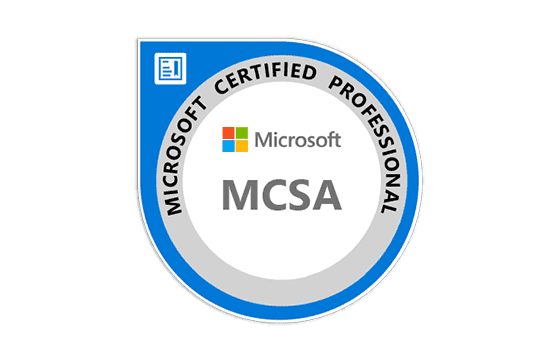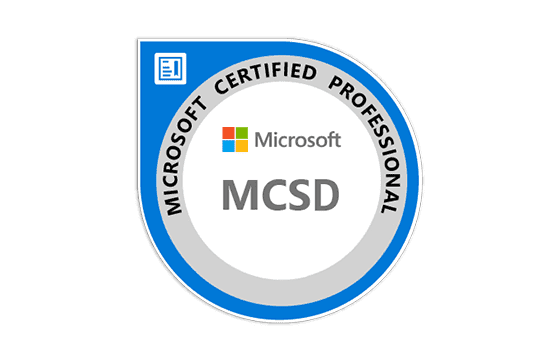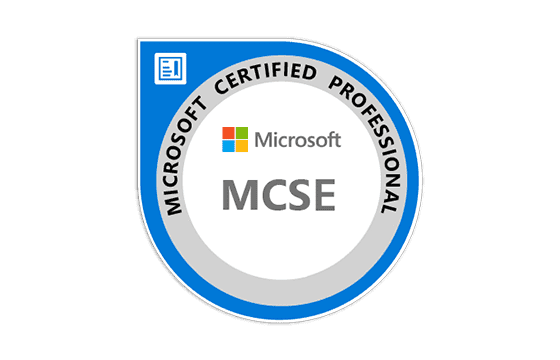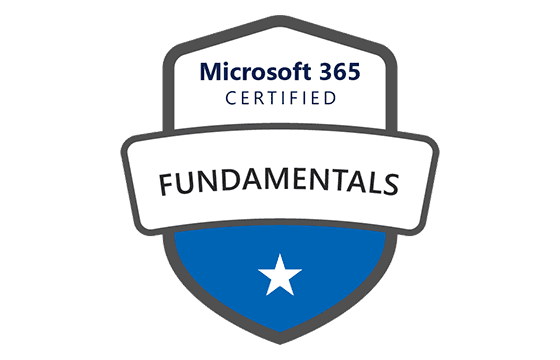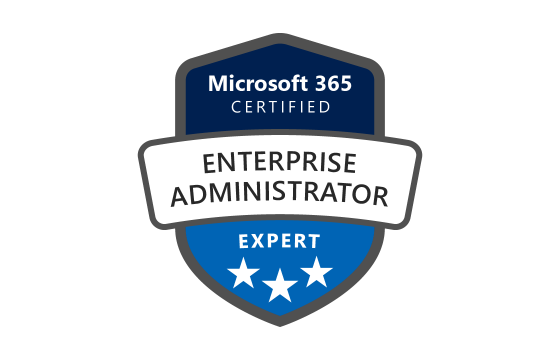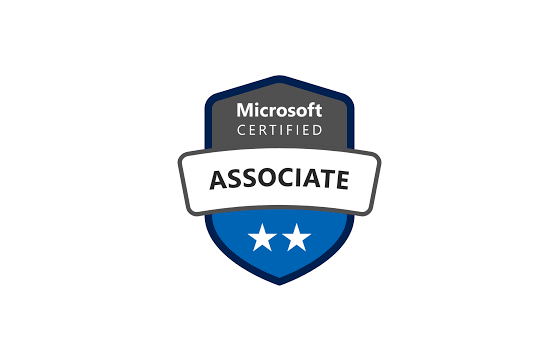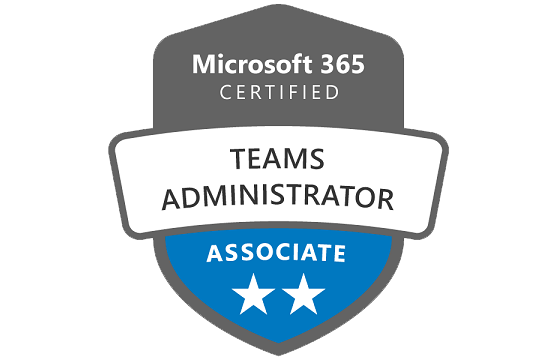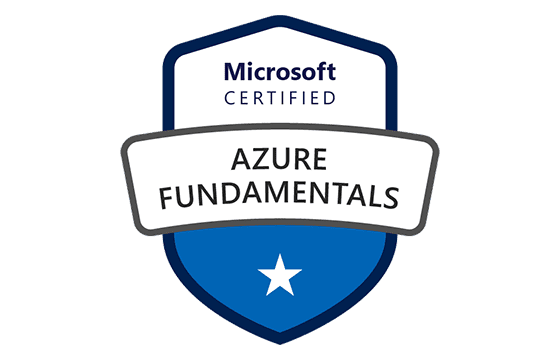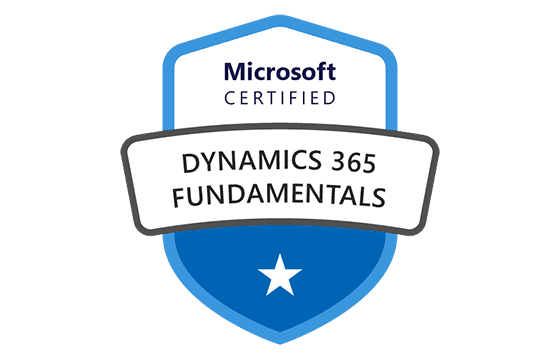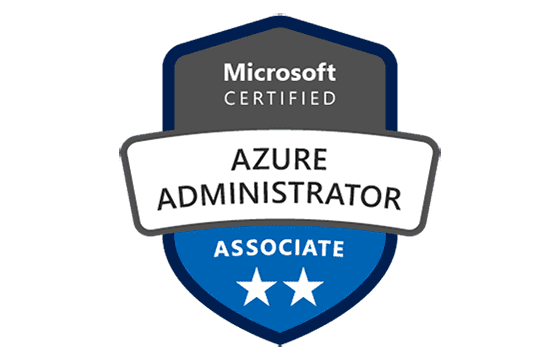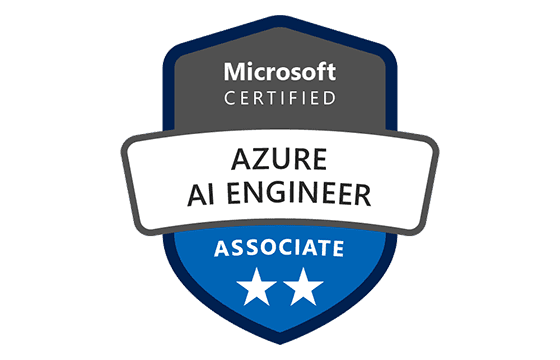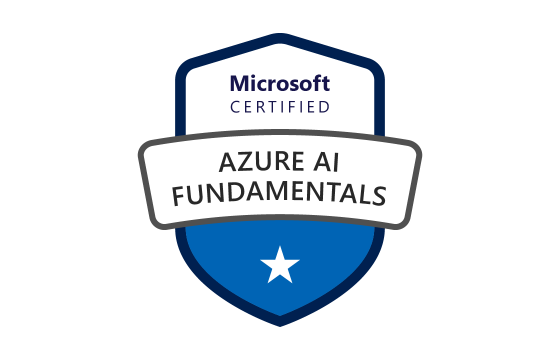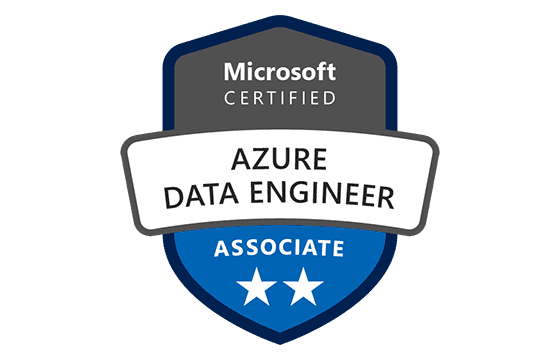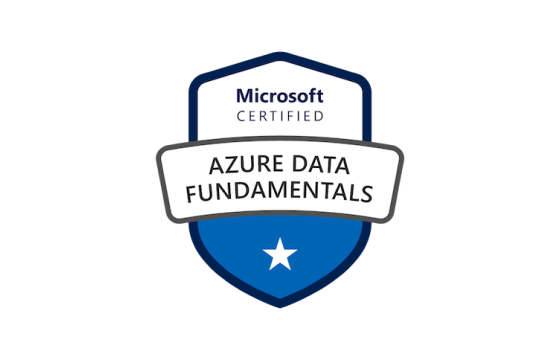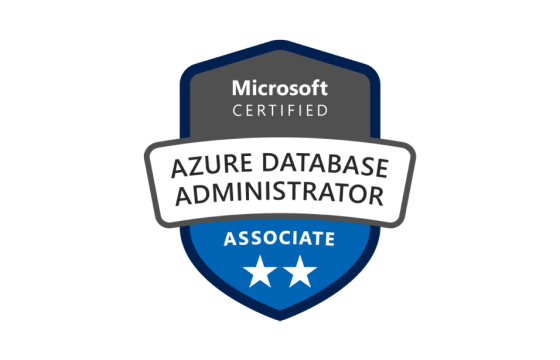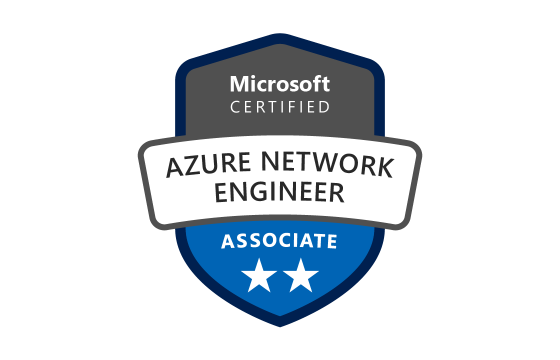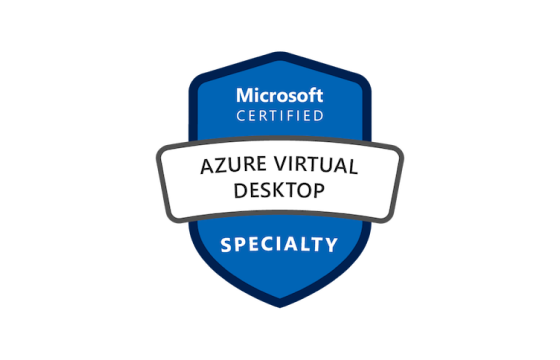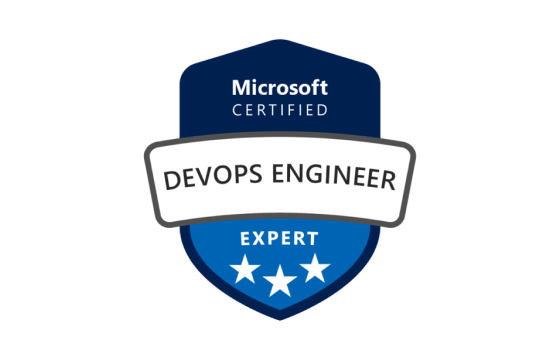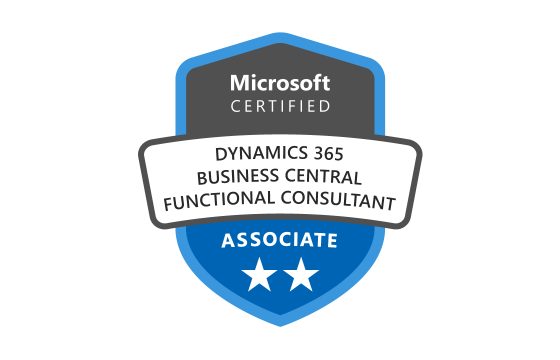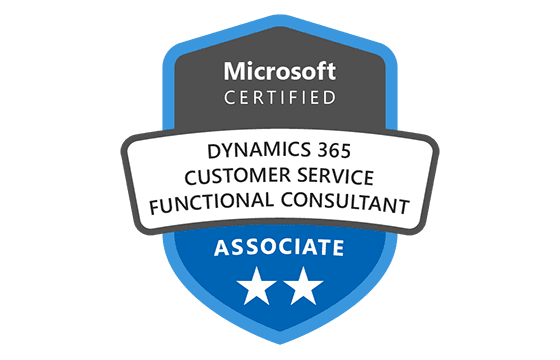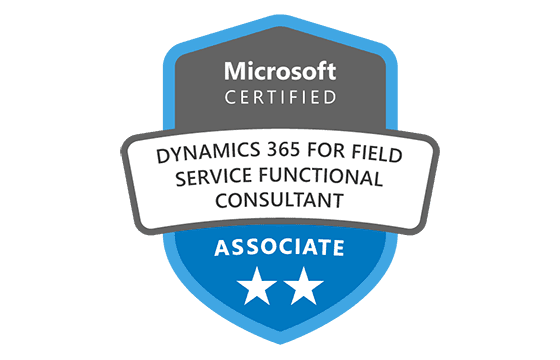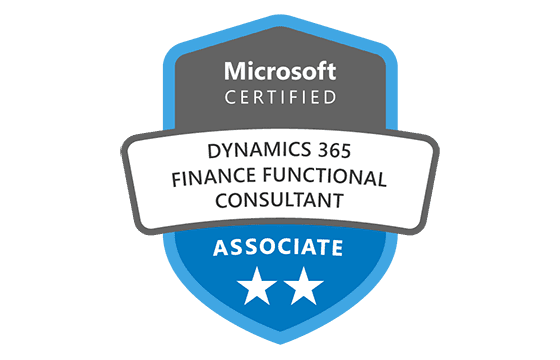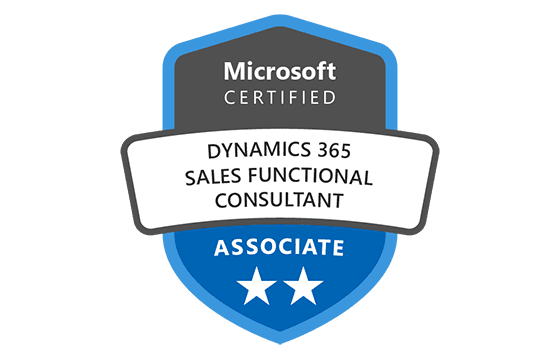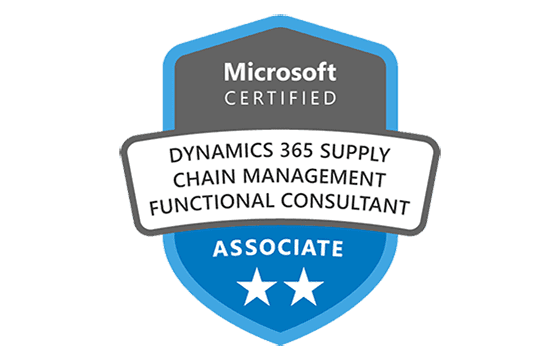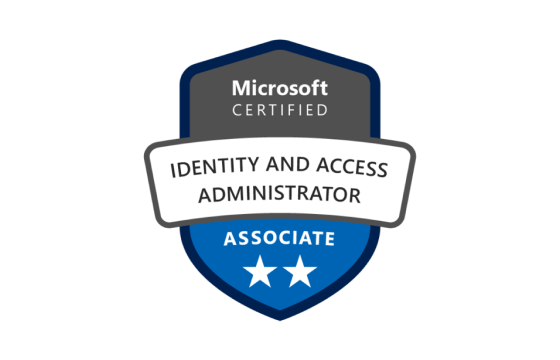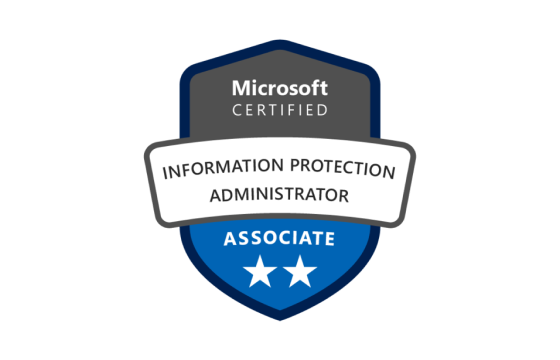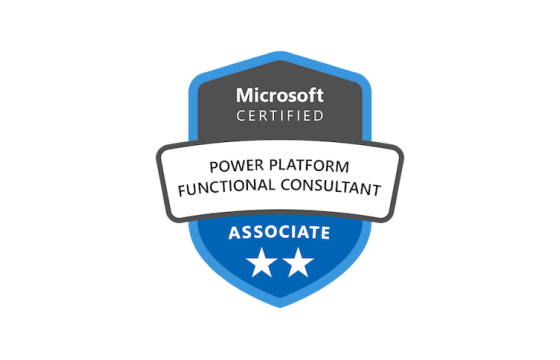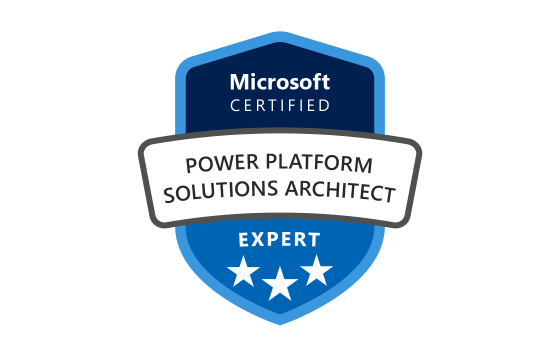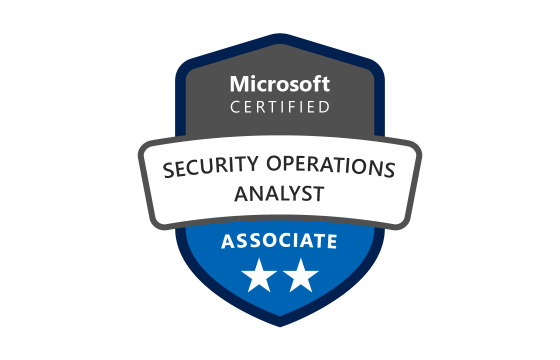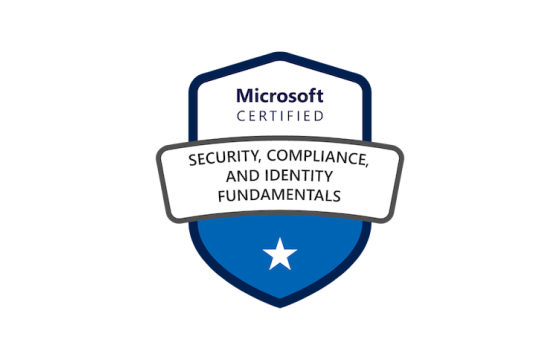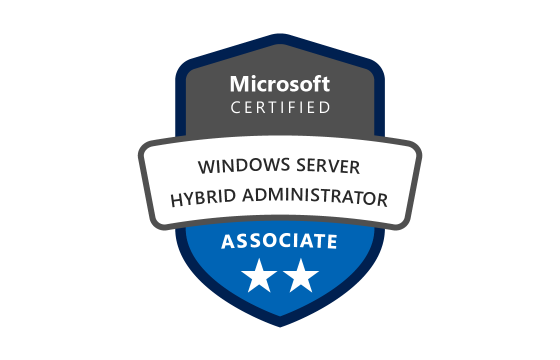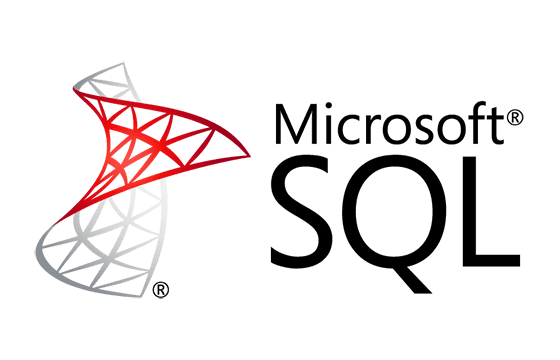Pass Your Microsoft 70-403 Exam Easy!
Microsoft 70-403 Exam Questions & Answers, Accurate & Verified By IT Experts
Instant Download, Free Fast Updates, 99.6% Pass Rate
Archived VCE files
| File | Votes | Size | Date |
|---|---|---|---|
File Microsoft.Dump4Certs.70-403.v2010-12-21.by.xXxJoRxXx.45q.vce |
Votes 1 |
Size 433.74 KB |
Date Jan 05, 2011 |
File Microsoft.SelfTestEngine.70-403.v2010-07-29.by.Rugare.99q.vce |
Votes 1 |
Size 882.54 KB |
Date Aug 02, 2010 |
File Microsoft.SelfTestEngine.70-403.v2010-05-25.by.Sebina.98q.vce |
Votes 1 |
Size 862.06 KB |
Date May 24, 2010 |
File Microsoft.SelfTestEngine.70-403.v2010-02-17.by.Stopper.93q.vce |
Votes 1 |
Size 849.99 KB |
Date Feb 17, 2010 |
File Microsoft.Pass4sure.70-403.v6.7.by.JohnDoe.88q.vce |
Votes 1 |
Size 837.91 KB |
Date Nov 05, 2009 |
Microsoft 70-403 Practice Test Questions, Exam Dumps
Microsoft 70-403 (TS: System Center Virtual Machine Manager 2008, Configuring) exam dumps vce, practice test questions, study guide & video training course to study and pass quickly and easily. Microsoft 70-403 TS: System Center Virtual Machine Manager 2008, Configuring exam dumps & practice test questions and answers. You need avanset vce exam simulator in order to study the Microsoft 70-403 certification exam dumps & Microsoft 70-403 practice test questions in vce format.
Empowering Enterprise Transformation through Microsoft 70-403 Certification
In the complex and ever-expanding domain of enterprise technology, the ability to configure, manage, and deploy sophisticated infrastructure systems has become one of the most essential competencies for modern professionals. Within this ecosystem, the solutions developed by Microsoft continue to serve as the bedrock of countless organizations worldwide. Over the decades, Microsoft’s technologies have evolved beyond simple tools into interconnected frameworks that sustain digital transformation, enabling industries to operate at unprecedented levels of efficiency and intelligence. The certification associated with advanced configuration and deployment, symbolized by the learning path tied to code 70-403, embodies this evolution. It represents the mastery of system integration, infrastructure management, and operational control—disciplines that define the fabric of enterprise resilience today.
In the era when systems existed in isolation, administrators were tasked primarily with managing physical machines, updating configurations manually, and troubleshooting individual nodes. However, with the advent of large-scale virtualization, hybrid networking, and the proliferation of cloud architecture, the expectations placed on IT professionals have expanded dramatically. Configuration management is no longer confined to individual servers; it now encompasses distributed systems, dynamic workloads, and intricate dependency chains. The challenge is no longer about simple installation—it is about creating automated, self-healing ecosystems that respond to changing workloads, ensure continuity, and align perfectly with business objectives.
Microsoft recognized this paradigm shift early, embedding in its technologies the capacity for intelligent automation and centralized control. The frameworks designed for configuration, deployment, and management now extend across hybrid platforms, connecting on-premises environments with the elasticity of cloud resources. This integration ensures that every component—from user permissions and data storage to network topology and application performance—functions within a unified policy structure. The skill to design, deploy, and maintain such architectures requires deep technical understanding and strategic insight. This is precisely the expertise measured and validated by the certification tied to this learning path.
The foundation of this expertise lies in understanding how modern enterprises rely on system consistency and operational predictability. The essence of configuration management is to enforce uniformity across complex infrastructures so that every node behaves as expected under all conditions. Whether deploying hundreds of virtual machines or maintaining a geographically distributed network, consistency ensures reliability. A single misconfiguration can cascade into system-wide vulnerabilities, downtime, or data exposure. Thus, configuration and deployment specialists serve as the architects of operational equilibrium, ensuring every service interacts harmoniously within the broader IT fabric.
At its core, Microsoft’s configuration and deployment technologies exemplify a philosophy of orchestration over isolation. Rather than treating each component as a standalone entity, they promote the concept of integrated management, where servers, applications, and users operate as part of a synchronized ecosystem. This approach aligns with the growing prevalence of automation and policy-based governance. Through automation, repetitive tasks are minimized, and system responsiveness is heightened. Policy-driven management ensures compliance with organizational standards, regardless of scale. Together, these elements define the contemporary architecture of intelligent IT systems.
Another defining aspect of this discipline is adaptability. Enterprise infrastructures today are not static; they evolve continuously as organizations grow, adopt new technologies, or expand into new regions. Professionals equipped with the skills validated through advanced Microsoft certifications understand how to design systems that evolve without disruption. Scalability is a fundamental expectation—systems must expand seamlessly while maintaining integrity, availability, and performance. The ability to anticipate future demands, integrate new services, and recalibrate configurations on the fly separates experienced administrators from true infrastructure strategists.
Exchange of information and collaboration across distributed systems also introduces another layer of complexity that professionals must master. The more interconnected an organization becomes, the greater the potential for security breaches, misconfigurations, or communication breakdowns. Microsoft’s configuration management frameworks address these challenges through built-in resilience mechanisms, adaptive monitoring, and secure communication protocols. The concept is not merely to maintain operation but to guarantee it under stress. This proactive resilience forms the backbone of modern enterprise reliability.
Moreover, the evolution of deployment methodologies has transformed how technology is introduced and maintained. In the past, deploying new systems often involved extensive downtime, manual configuration, and a high probability of errors. Modern deployment strategies leverage automation pipelines, configuration templates, and validation scripts to minimize human error while maximizing efficiency. These advancements allow organizations to roll out updates, patches, and new services without halting operations—a capability critical in industries where uptime equates directly to revenue. Professionals with advanced Microsoft training understand how to harness these methodologies, ensuring deployment is not a disruption but a continuous evolution.
The certification path tied to this area of study also emphasizes the interrelation between system performance and organizational agility. As companies strive to remain competitive in rapidly changing markets, their IT infrastructure must be capable of responding instantly to shifts in demand. Dynamic resource allocation, automated scaling, and intelligent diagnostics empower organizations to adapt without manual intervention. These capabilities stem from the same foundational principles that govern configuration and deployment mastery: precision, foresight, and automation.
The philosophical underpinnings of Microsoft’s approach to systems management lie in empowerment through simplification. Complexity in modern infrastructure is inevitable, but chaos is not. By simplifying management through centralized interfaces and predictable automation, Microsoft’s frameworks enable professionals to control expansive systems with confidence. The real challenge is not in operating the technology but in aligning its capabilities with strategic business objectives. The most proficient practitioners are not merely technologists—they are enablers of organizational transformation, translating business requirements into technical frameworks that deliver measurable value.
The evolution of enterprise systems has also elevated the role of data as the lifeblood of decision-making. Configuration management ensures that data integrity is preserved throughout the infrastructure, while deployment strategies ensure that information systems remain responsive and accessible. Data no longer resides in isolated silos but flows fluidly across integrated environments. Thus, maintaining the accuracy, availability, and confidentiality of data requires disciplined configuration and vigilant oversight. Professionals skilled in Microsoft’s management frameworks understand how to enforce data governance policies at every layer, from storage to transmission, without compromising performance or accessibility.
Security, inevitably, stands at the forefront of all configuration and deployment endeavors. In today’s landscape, every system is a potential target. Misconfigurations, unpatched services, and poorly managed credentials often serve as gateways for exploitation. Microsoft’s design philosophy prioritizes security as an intrinsic component rather than an afterthought. Access control, encryption, authentication, and auditing are seamlessly woven into the operational fabric of the infrastructure. For professionals pursuing advanced certification in this domain, security is not an isolated skill—it is a pervasive discipline that intersects with every task and decision.
Equally important is the cultural transformation accompanying technological evolution. As organizations shift toward automation and hybrid operations, the role of IT professionals expands from operational maintenance to strategic leadership. Those who master configuration and deployment at a systemic level become catalysts for organizational innovation. They lead modernization efforts, streamline processes, and redefine operational efficiency. Their expertise ensures that technology remains an enabler, not a bottleneck. The knowledge validated through Microsoft’s certification represents more than technical proficiency; it embodies a mindset of adaptability, foresight, and continuous improvement.
Understanding Microsoft’s broader vision also provides context for the importance of mastering configuration and deployment. The company’s approach is not merely to create tools but to build ecosystems that support global-scale operations. Whether managing infrastructure across continents or enabling secure collaboration between remote teams, Microsoft’s technologies serve as the connective tissue of digital enterprises. The principles validated through the associated certification reflect a deep alignment with this vision—one centered on empowerment, resilience, and innovation.
Modern enterprises now operate within a digital continuum that merges local and cloud environments. Hybrid systems have become the standard rather than the exception. Professionals who understand how to bridge these worlds hold a strategic advantage. The certification aligned with advanced configuration and deployment ensures that individuals possess the ability to design and manage hybrid architectures seamlessly, maintaining consistent performance, compliance, and reliability across boundaries. The resulting systems embody the fusion of flexibility and control—qualities that define modern IT excellence.
Looking deeper into the philosophical implications, the mastery of configuration and deployment represents the human capacity to bring order to complexity. As technology becomes increasingly autonomous, human oversight remains indispensable. Systems may self-correct, but they require intelligent design to do so effectively. The certification’s focus on these principles underscores the enduring relevance of human expertise in an age of automation. Professionals who internalize these lessons become the guardians of digital integrity—ensuring that automation enhances, rather than undermines, the reliability of enterprise systems.
Furthermore, the certification tied to this discipline acts as a bridge between theory and practice. It transforms abstract concepts such as automation, integration, and orchestration into applied knowledge that drives measurable outcomes. Through real-world scenarios and performance-based validation, it ensures that certified individuals are not merely knowledgeable but capable of execution at scale. The resulting skill set equips professionals to lead transformation initiatives, streamline operational workflows, and maintain enterprise continuity even in the face of disruptive change.
At its essence, this learning path encapsulates the evolution of IT from reactive maintenance toward proactive orchestration. It acknowledges that success in modern enterprises depends on foresight, adaptability, and continuous optimization. As technology evolves, so too must the professionals who manage it. The certification provides a structured framework for developing these capabilities, ensuring that practitioners remain at the forefront of digital innovation.
The discipline of configuration and deployment extends far beyond technical execution—it reflects a philosophy of control, efficiency, and harmony in a digital ecosystem. The professionals who master it ensure that the systems driving global enterprises remain resilient, secure, and future-ready. Their expertise forms the invisible backbone of modern operations, sustaining communication, data flow, and collaboration across every layer of business activity.
Microsoft’s continuing influence in shaping this domain underscores the enduring importance of structured, intelligent management frameworks. As enterprises navigate the complexities of hybrid infrastructures, cloud integration, and automation, the principles embedded within this certification remain timeless. They serve as a guiding compass for organizations striving to achieve balance between innovation and stability, between freedom and governance. The first step toward this mastery begins with understanding the philosophy of configuration and deployment—not as isolated skills, but as the foundations of intelligent enterprise architecture.
Foundations of Advanced Configuration and Deployment: A Practical Prelude (70-403)
In the orchestral complexity of modern enterprise IT, the mastery of configuration and deployment is less an isolated skill and more a disciplined craft. The certification pathway associated with the numeric identifier 70-403 anchors this craft in concrete objectives: architects and administrators are expected to synthesize infrastructure design, automated orchestration, and operational governance into a coherent whole. While the vendor behind many of the ecosystem’s tools is Microsoft, the competence signified by the code extends beyond any single product—what it measures is an ability to reason about systems whose scale, heterogeneity, and tempo defy simple, ad-hoc answers.
The contemporary data centre is a palimpsest of legacy systems, virtualized pools, and cloud adjuncts. In such an environment, the imperative is to design configurations that are idempotent, repeatable, and observable. The essence of advanced deployment practice is thus not only achieving a successful install but ensuring that the same procedure, executed a thousand times across different boundaries, yields predictable results. Professionals preparing along the 70-403 trajectory learn to treat deployments as deterministic pipelines: declarative blueprints replace fragile scripts; configuration state is monitored and reconciled rather than assumed; and rollback strategies are as carefully planned as rollouts.
Automation pervades modern operations, but it is not an end in itself. The craft validated by 70-403 emphasizes the judicious application of automation as a force multiplier. Automating a process that embeds bad configuration or insecure defaults simply proliferates errors. Instead, the focus is on automating the right things—lifecycle management, patch orchestration, certificate rotation, and compliance verification—so human attention is liberated for systemic design decisions. In large enterprises,es the velocity of change demands this reallocation: when thousands of endpoints and hundreds of services require coordinated updates, manual approaches become a liability rather than an asset.
Scalability is another cornerstone. Practitioners must architect systems that grow horizontally with minimal friction. This involves selecting storage patterns that avoid I/O bottlenecks, ensuring that network topologies permit graceful expansion, and partitioning services so workloads can be distributed. The subtler aspects involve thinking about administrative scale—delegation and role-based control so that teams can operate in parallel without stepping on one another’s toes, and naming and tagging conventions that make resource groups intelligible to automation and to human operators alike. The 70-403 framework trains candidates to look beyond simple server counts to the orchestration of governance at scale.
Resilience and recoverability are equally central. It is not sufficient for a deployment to succeed on day one; it must be resilient to component failure, network partitions, operator error, and cyber incidents. This means incorporating redundancy at multiple layers, validating failover procedures, and practicing recovery scenarios. The learning path linked to the code encourages an attitude of deliberate redundancy: asynchronous replication where appropriate, warm spares for critical services, and the tactical use of delayed copies to protect against logical corruption. Equally important is the instrumentation that surfaces anomalies early—comprehensive logging, transaction tracing, and health probes that feed automated remediation or alert human operators before user experience degrades.
Security weaves through every decision in an advanced deployment. From the initial configuration baselines to runtime policies, the architecture needs to enforce least privilege, ensure secure defaults, and maintain an auditable trail of changes. Practical measures include compartmentalizing network zones, using certificate-based authentication for sensitive services, and adopting multifactor protection for privileged operations. The code’s syllabus stresses that secure deployments are also usable deployments: overly burdensome security controls that force users to adopt risky workarounds are self-defeating. Thus, a competent practitioner creates defensive depth while preserving operational ergonomics.
Hybrid paradigms—the coexistence of on-premises systems with cloud services—are the norm rather than an exception. One of the nuanced capabilities validated by 70-403 is designing hybrid topologies that preserve control and compliance while leveraging the elasticity and managed services of public clouds. This requires a precise choreography of identity synchronization, mail and message routing (where relevant), and data residency strategies. It also demands an appreciation of divergent failure modes; cloud outages manifest differently than local hardware failures, and a robust design anticipates these differences with cross-domain health checks and failover planning.
Operational governance is another major pillar. Configuration drift is a pernicious and inevitable phenomenon unless actively managed. The preferred strategy is continuous reconciliation: treat every environment as code-defined and continuously compare the actual state to the desired one. This is not merely a technical exercise; it is a cultural one. Organizations must invest in change control, in testable configuration artifacts, and in rollback rehearsals. The 70-403 emphasis on governance teaches candidates to embed policy as code—so that compliance, retention, and access rules are enforced by the same automation engines that perform deployments.
Diagnostics and forensic readiness matter profoundly. No matter how mature the deployment practice, incidents will occur. The question is not whether, but how quickly teams can triage and recover. Instrumentation serves both operational visibility and post-mortem clarity: high-fidelity logs, correlated traces across microservices, and immutable audit trails enable teams to reconstruct events, identify root causes, and refine both automation and human processes. The code encourages a forensic mindset—designing systems so that when incidents happen, they reveal their own answers rather than conceal them within ephemeral state.
Testing deserves particular attention. Unit tests for configuration artifacts, integration tests for interdependent services, and chaos engineering experiments for resilience are all part of a mature toolkit. The 70-403-aligned practitioner treats testing as infrastructure insurance. Deployments are gated by automated suites that validate not only functional correctness but non-functional attributes: latency under load, failover behavior, encryption at rest, and throughput characteristics. This test-centric culture turns deployment from a risky ceremony into a confidence-building, repeatable pipeline.
Interoperability and standardized protocols are practical fulcrums in enterprise landscapes rife with heterogeneity. Adhering to well-understood standards makes integrations less brittle and reduces the cognitive load when troubleshooting. Whether the conversation is about directory synchronization, message transport, or API semantics, the emphasis on well-defined contracts and versioning strategies prevents fragile coupling. Candidates studying the 70-403 path are trained to prefer predictable integration patterns: backward-compatible APIs, clear SLAs, and robust schema evolution techniques.
People and process are as critical as technology. Advanced deployment is social as well as technical work: it requires collaborative runbooks, clear escalation matrices, and knowledge transfer so that practices survive personnel changes. The professional credential tied to the code presumes that engineers can document intentions and operational playbooks succinctly so that separate teams—security, networking, application owners—can coordinate effectively during both routine operations and crises.
Economics also informs our design choices. Total cost of ownership is not merely hardware lists; it includes administrative effort, downtime risk, and the cost of remediating security incidents. Effective deployment architects balance capital expense against operational cost, choosing when to invest in redundancy, when to accept managed services for convenience, and when to automate to reduce manual toil. The 70-403 syllabus spotlights cost-aware engineering: designs that meet technical requirements without imposing unsustainable operational overhead.
Migration strategies form a practical competency area. Legacy systems rarely allow for immaculate cutovers. Incremental migration approaches—side-by-side coexistence, phased cutovers, and gateway translation layers—reduce risk by allowing validation at each stage. The credentialed practitioner knows how to design coexistence periods, minimize user disruption, and migrate data with fidelity. These migrations often require intricate scheduling, synchronization of identity and permissions, and carefully crafted communication plans to stakeholders.
Documentation, although sometimes undervalued, is indispensable. Clear, versioned documentation of configuration baselines, topology diagrams, and runbooks reduces mean time to recovery. The 70-403 approach assumes that professionals will generate living documentation: machine-readable topologies, annotated automation code, and operational playbooks that are exercised and updated regularly. This preserves institutional knowledge and accelerates onboarding.
There is the matter of professional judgement—the art of choosing trade-offs in ambiguous environments. Every architecture involves concessions: latency vs. consistency, agility vs. control, cost vs. resilience. The 70-403 learning trajectory sharpens the ability to make defensible choices, to articulate the risks and mitigations, and to align technical trade-offs with business priorities. It is this synthesis—the fusion of technical proficiency, governance discipline, and strategic sensitivity—that differentiates a technician from an infrastructure steward.
To embark upon mastery of these domains is to accept a mindset of continuous refinement. The identifier 70-403 is more than a number; it is a waypoint on the trajectory of a practitioner who aspires to lead complex deployments with confidence. The vendor whose tools are commonly employed in this sphere, Microsoft, provides the platform features and integration points, but the deeper competence resides in applying principles consistently across heterogeneous environments. The work is exacting and intellectually demanding, yet profoundly gratifying: when systems hum reliably and teams can deliver new capabilities with minimal friction, the invisible architecture oforganizationaln productivity is unmistakably fortified.
Architecting Enterprise Configuration and Lifecycle Management in the Modern Era (70-403)
The modern enterprise thrives on digital equilibrium—a delicate state where performance, scalability, and governance coalesce into a synchronized rhythm. Within this realm, the certification linked to 70-403 signifies a pivotal expertise: the orchestration of systems that remain consistent, secure, and adaptable throughout their lifecycle. It reflects a holistic understanding of configuration as both a technical and philosophical discipline, a means of ensuring that every deployed asset contributes predictably to the collective functionality of the organization. This mastery is deeply intertwined with Microsoft’s ecosystem of management technologies, yet it transcends any one vendor’s suite, grounding itself in universal principles of control, automation, and sustainability.
Configuration management once revolved around static systems—physical servers configured manually, updated occasionally, and monitored sporadically. That paradigm has dissolved. Now, infrastructure exists as code, environments are ephemeral, and deployment cycles spin at breakneck speed. The 70-403 mindset embraces this volatility by converting configuration from a brittle process into a resilient framework. Declarative configurations define desired states, while automation enforces conformity between the ideal and the actual. This evolution replaces the anxiety of uncertainty with the assurance of consistency—each deployment is no longer an act of improvisation but a reproducible performance guided by codified intelligence.
Lifecycle management extends this stability over time. Every configuration must anticipate its own decay—updates, deprecations, and shifting dependencies are inevitable. Thus, professionals aligned with the 70-403 standards cultivate environments where systems evolve without disruption. They design for mutability, embedding mechanisms for seamless upgrades, automated validation, and policy-driven refresh cycles. This ensures that infrastructure remains a living organism, capable of self-correction and adaptation rather than a static relic requiring costly intervention. The ultimate goal is autonomy: systems that sustain themselves within controlled boundaries, reducing the friction between innovation and stability.
The synergy between configuration and lifecycle governance demands granular visibility. Observability—distinct from mere monitoring—grants administrators the ability to perceive not just failures but patterns, trends, and causal chains. Under the philosophy espoused by 70-403, observability forms the nervous system of an enterprise’s digital anatomy. Each event, log, or telemetry stream becomes a signal informing continuous improvement. This data-driven consciousness allows predictive maintenance, refined resource allocation, and swift anomaly detection. In such ecosystems, downtime ceases to be an unforeseen disaster and becomes a measurable variable, preempted by early warning and intelligent automation.
Security forms an immutable axis around which all configuration decisions orbit. Inadequate controls within configuration management pipelines can transform automation into a vulnerability amplifier. The rigor of 70-403 embeds security at every stage of the system lifecycle—from baseline hardening and identity verification to encryption governance and auditability. Secrets are never stored in plain view; privileges follow the principle of least access; every configuration change is traceable to an authenticated actor. The practitioners who internalize this approach recognize that configuration management is, in essence, security management. By securing the pipeline, they secure the enterprise.
A crucial realization in advanced configuration architecture is that chaos is natural but must be guided. Drift—the divergence between desired and actual system states—is not an aberration but a symptom of change. The sophistication of a system lies in how gracefully it reconciles this drift. Automated drift detection, coupled with enforced remediation, ensures perpetual alignment. Through consistent reconciliation cycles, the system retains integrity despite constant transformation. The 70-403 certification cultivates professionals who understand that true control is not stasis but the ability to manage motion without disorder.
Beyond technical prowess, architecture in lifecycle management is a study in balance. Over-automation can suffocate flexibility, while insufficient automation breeds inconsistency. The art lies in selecting thresholds—where to allow human discretion and where to enforce machine precision. This dialectic defines operational maturity. Microsoft’s frameworks for enterprise configuration, mirrored through the competencies validated by 70-403, exemplify this synthesis: structured enough to ensure compliance yet elastic enough to accommodate contextual nuances. Practitioners develop the discernment to calibrate these parameters dynamically, ensuring governance without rigidity.
The lifecycle of any system is punctuated by change management. Deploying updates, patches, or architectural shifts can be perilous without disciplined governance. The methodology propagated by 70-403 reframes change management from bureaucratic oversight into a living process of risk-aware iteration. Each change is assessed not merely for immediate benefit but for its downstream impact—on security, compatibility, and performance. Rollback paths are premeditated; validation occurs through staged environments replicating production; and automation ensures that deployments are reversible, traceable, and verifiable. In this culture, change becomes normalized rather than feared.
Documentation is the connective tissue of configuration architecture. It translates tacit knowledge into structured intelligence. Yet, in the contemporary paradigm, documentation is not static prose but living metadata integrated with automation workflows. Every configuration artifact carries embedded context—annotations, version history, and policy references. The approach consistent with 70-403 transforms documentation from an afterthought into an operational component, ensuring that knowledge remains synchronized with evolving infrastructure. This reduces the dependency on tribal memory and fortifies resilience against personnel turnover.
Interoperability is another defining pillar. Enterprises operate across heterogeneous domains—hybrid clouds, multi-vendor ecosystems, and legacy integrations. Configuration architecture must therefore bridge divergent paradigms without compromising consistency. The expertise symbolized by 70-403 reflects a practitioner’s ability to create abstraction layers that unify these disparate systems. Whether through standardized APIs, schema mapping, or orchestration frameworks, interoperability ensures that organizational complexity remains a managed asset rather than a liability. Microsoft’s suite of management technologies often provides these connective tissues, but the underlying principle is vendor-agnostic harmony.
Sustainability—both technical and environmental—has emerged as an ethical dimension of configuration governance. Efficient resource allocation, automated scaling, and workload consolidation contribute not only to performance but also to energy conservation. Professionals aligned with the 70-403 discipline increasingly factor ecological impact into their architectural decisions, optimizing workloads for minimal waste. This awareness reflects a maturing philosophy: that responsible configuration is not only about operational excellence but also about stewardship of the digital ecosystem and the resources it consumes.
Human factors remain indispensable in lifecycle management. No matter how autonomous the systems become, the interpretive and strategic capacity of humans is irreplaceable. The most successful implementations, as guided by 70-403 competencies, cultivate symbiosis between human oversight and machine automation. Humans design intent, while machines enforce consistency. The feedback loop between these agents drives continuous improvement—operators refine automation based on observed results, and automation amplifies human insight by executing it at scale. This equilibrium transforms configuration management from an administrative function into a creative partnership.
Incident recovery illustrates the culmination of lifecycle orchestration. Despite the best preventive measures, disruptions occur—hardware failures, software regressions, or human mistakes. The measure of an architecture’s quality lies in its recoverability. Configurations must encapsulate not only desired steady states but also recovery blueprints. Snapshotting, versioning, and automated redeployment ensure that any system can be restored to operational integrity swiftly. The certification standard represented by 70-403 ensures that practitioners internalize recovery as a design principle, not an afterthought. This mindset reduces downtime and instills organizational confidence in the resilience of their digital estate.
Strategic alignment between IT configuration and business objectives forms the highest tier of architectural maturity. Configuration management ceases to be a back-office concern and becomes an instrument of strategic agility. When systems are reliably configured and governed, organizations can pivot to new opportunities rapidly—launching services, adopting technologies, or scaling regions without fear of instability. The Microsoft-aligned discipline associated with 70-403 is therefore not about technology for its own sake; it is about enabling business velocity through reliable digital infrastructure.
An emerging dimension of lifecycle governance is intelligent automation—embedding artificial intelligence and predictive analytics into configuration management pipelines. By analyzing telemetry data, machine learning models can anticipate degradation, recommend optimal configurations, or even initiate autonomous remediation. This convergence between AI and systems management marks a frontier that the ethos of 70-403 prepares professionals to navigate. The practitioner’s role evolves from executor to designer of feedback loops where machines learn from the operational environment to refine their own governance.
Ethics and compliance constitute the moral compass of configuration management. Enterprises operate under complex regulatory regimes—data sovereignty, privacy mandates, and industry standards. Configurations must embody these constraints, encoding them into templates and policies. The certified expertise reflected by 70-403 involves crafting systems where compliance is not a periodic audit but a continuous posture. Every configuration change either preserves or enhances compliance status, ensured through automated validation and real-time monitoring. This reduces audit friction and strengthens trust with stakeholders and regulators alike.
At the heart of lifecycle management lies culture—the invisible yet decisive force shaping how technology is perceived and maintained. A culture of accountability, learning, and transparency transforms configuration governance from a mechanical task into an organizational discipline. Practitioners inspired by the 70-403 ethos foster this culture by advocating post-incident reviews, mentoring peers, and prioritizing clarity over complexity. Through shared understanding, the enterprise evolves collectively toward resilience.
As organizations accelerate digital transformation, their dependence on coherent configuration and lifecycle management intensifies. The philosophies encoded within the 70-403 framework represent the antidote to entropy. They advocate order without rigidity, automation without dehumanization, and security without obstruction. The role of Microsoft’s ecosystem in this landscape is both foundational and enabling—it provides the scaffolding upon which these principles are practiced. Yet the true measure of mastery lies in applying them universally, adapting to contexts beyond any single platform.
The practitioner who embodies this discipline perceives systems not as discrete entities but as evolving constellations of intent, state, and process. Configuration and lifecycle management thus become expressions of design intelligence, blending art and engineering in equal measure. To sustain such an environment is to maintain a living architecture—a structure that breathes, adapts, and endures. The code 70-403 stands as a silent emblem of this philosophy: the pursuit of perpetual alignment between human purpose and technological motion.
ChatGPT said:
Mastering Systems Integration and Operational Harmony in Complex Infrastructures (70-403)
In the dynamic world of enterprise technology, where systems evolve at an unrelenting pace, the ability to integrate, coordinate, and sustain technological harmony is a defining hallmark of organizational maturity. The certification identified with 70-403 embodies this principle, positioning professionals to align diverse systems, platforms, and operational paradigms into a single, orchestrated framework of reliability and performance. It reflects an era where enterprises no longer function as monolithic structures but as fluid ecosystems that depend on continuous interaction between hardware, software, networks, and human intelligence. Within this realm, integration is not just a technical process—it is a philosophy of connection, resilience, and adaptability that defines how modern IT infrastructure thrives.
The digital enterprise is a labyrinth of dependencies, each system feeding into another, generating an endless flow of data and operational triggers. For professionals aligned with the 70-403 discipline, the challenge lies in constructing integration layers that preserve coherence amid this complexity. Each application, database, and service component must communicate through defined interfaces, ensuring the seamless exchange of data while maintaining performance integrity and security. The principle extends beyond the mechanics of APIs or protocols; it involves designing architectures where information can traverse organizational boundaries without distortion, duplication, or loss. This vision transforms integration from a fragile link between systems into a living tissue that connects the enterprise as one cohesive organism.
Operational harmony within such complex infrastructures requires meticulous design. It demands the mapping of dependencies across every layer—network configurations, directory services, security policies, and application frameworks. Through the lens of 70-403, professionals learn that true integration is not merely about interconnectivity but synchronization. Systems must operate in rhythm, responding to triggers in real time while adhering to governance constraints and performance thresholds. The ability to orchestrate these elements ensures that when one service scales or shifts, others respond intuitively, preserving continuity without manual intervention. This orchestration transforms technology management from reaction to anticipation.
At the heart of operational harmony lies automation. The scale and complexity of today’s enterprise landscapes make manual integration infeasible. Automation bridges that gap, enforcing consistency across distributed environments. Configuration automation ensures that systems are deployed with identical baselines, eliminating variability that often undermines reliability. Lifecycle automation maintains alignment through updates, migrations, and recovery operations. The rigor introduced through 70-403 teaches practitioners that automation must be declarative, not procedural—defining the intended state rather than the specific steps to achieve it. This allows the system to interpret, validate, and reconcile discrepancies autonomously, ensuring reliability even under evolving conditions.
Integration also demands resilience. In complex infrastructures, failure is inevitable; what differentiates mature systems is their capacity to absorb disruption without collapsing. Designing for failure is a key principle within the 70-403 philosophy. Redundant pathways, load balancing, and adaptive routing ensure continuity even when components falter. Yet resilience extends beyond hardware redundancy—it encompasses data integrity, transaction consistency, and dependency awareness. When a service fails, dependent systems must degrade gracefully rather than catastrophically. This requires thorough dependency modeling, where systems are aware of each other’s operational context. Such awareness forms the bedrock of operational harmony, allowing enterprises to recover swiftly while minimizing the impact of failure.
Another central pillar in integration architecture is observability. Modern systems are too vast and interconnected for traditional monitoring alone to provide adequate insight. Observability offers a holistic understanding of behavior, enabling engineers to detect emergent issues before they escalate. Within the framework of 70-403, observability is treated as an intrinsic design component rather than an afterthought. Telemetry, logging, and distributed tracing provide granular visibility into every interaction between systems. This data-driven awareness not only aids troubleshooting but fuels continuous optimization, enabling enterprises to refine integration points based on empirical evidence rather than intuition.
Security, as always, underpins every aspect of integration. When multiple systems share data and functionality, each connection becomes a potential vulnerability. The 70-403-aligned practitioner learns to architect integrations that honor the principle of least privilege, employing authentication, encryption, and segmentation to contain exposure. Security tokens, certificate validation, and auditing mechanisms are embedded directly into integration workflows. Rather than treating security as a barrier, this approach makes it an enabling force—ensuring that data flows safely while remaining auditable and compliant. The maturity of an integration strategy is measured not by how open it is, but by how safely openness is managed.
The interplay between cloud and on-premises systems introduces additional layers of complexity. Hybrid infrastructures require seamless data synchronization, workload mobility, and governance consistency across domains that differ in architecture and operational philosophy. Within this sphere, the principles represented by 70-403 equip professionals to unify hybrid environments through identity federation, policy harmonization, and consistent automation frameworks. The practitioner learns to design topologies where the boundaries between local data centers and cloud platforms blur, allowing applications to shift fluidly based on performance or cost considerations. Such hybrid agility exemplifies the future of integration—flexible, resilient, and transparent.
Interoperability further elevates this discipline. While vendors like Microsoft provide foundational tools for management and orchestration, true enterprise harmony depends on the ability to interface with systems beyond a single ecosystem. This calls for adherence to open standards and protocols that transcend proprietary boundaries. Through adherence to interoperability best practices, professionals ensure that their architectures remain future-proof—capable of integrating emerging technologies without extensive refactoring. The 70-403 framework encourages this forward-looking mindset, treating interoperability as a hedge against obsolescence and a gateway to innovation.
Performance optimization forms another layer of complexity in integrated infrastructures. As systems interconnect, latency and throughput become critical factors that can make or break user experience. The professionals guided by the philosophy of 70-403 learn to design integrations that are not only functional but efficient. Data caching, load balancing, and asynchronous processing mechanisms ensure that performance scales with demand. Bottlenecks are identified through performance baselines and mitigated using capacity planning and adaptive resource allocation. By embedding performance awareness into every layer, enterprises ensure that integration enhances rather than burdens overall operations.
Data governance is perhaps the most intricate challenge in system integration. As data traverses multiple systems, maintaining consistency, accuracy, and lineage becomes vital. The 70-403 discipline instills a deep respect for data integrity—every transfer, transformation, and replication must be verifiable and reversible. Data schemas must remain synchronized, and metadata must document every change. Beyond technical enforcement, this discipline cultivates accountability, ensuring that data governance aligns with legal and ethical standards. Integration thus evolves into a vehicle for trust, where transparency and reliability underpin every decision.
Collaboration across teams defines the human dimension of integration. Complex infrastructures are rarely managed by a single group; they demand coordinated efforts between network engineers, database administrators, security specialists, and application developers. The collaborative ethos embedded in the 70-403 framework fosters communication through shared documentation, standardized workflows, and unified change management processes. When teams speak a common operational language, integration ceases to be a series of isolated efforts and becomes a collective enterprise. The resulting culture values precision, shared responsibility, and mutual visibility across domains.
Adaptability remains the cornerstone of sustained harmony. Technology ecosystems never stand still; mergers, acquisitions, and emerging innovations continuously reshape them. The ability to reconfigure integrations dynamically, without downtime or disruption, distinguishes resilient enterprises. Through the teachings of 70-403, professionals internalize the necessity of designing modular architectures—where components can evolve independently yet maintain consistent interfaces. This modularity ensures that change becomes a routine operation rather than an existential threat. The architecture itself evolves as a living entity, continuously aligning with business objectives and technological advancements.
Incident response in integrated environments demands a systematic approach. Failures in one system can cascade across dependencies, amplifying their impact. The structured discipline associated with 70-403 introduces recovery architectures that emphasize isolation, redundancy, and automated failover. Critical services are sandboxed, ensuring containment, while automated workflows restore functionality within predefined thresholds. Post-incident analytics refine these recovery mechanisms, closing feedback loops and strengthening resilience over time. The goal is not to eliminate incidents—a near impossibility—but to ensure that their effects remain manageable, measurable, and reversible.
Strategic insight transforms integration from a technical endeavor into a business enabler. When systems communicate seamlessly, data flows faster, decisions become more informed, and innovation accelerates. The practitioner shaped by 70-403 perceives integration as a strategic investment, aligning technology with organizational vision. This integration-driven agility allows enterprises to pivot quickly in response to market shifts, launch new services efficiently, and scale operations sustainably. Integration, in this sense, becomes the invisible infrastructure of adaptability—the foundation upon which competitive advantage is built.
The evolution toward intelligent, self-managing systems is reshaping integration practices. Artificial intelligence and machine learning now augment traditional operations, analyzing telemetry data to optimize configurations or detect anomalies in real time. Within this emerging paradigm, the principles reflected in 70-403 find new relevance. Professionals design feedback systems where integration points themselves are intelligent—capable of learning usage patterns, predicting failures, and self-healing before human intervention is required. This evolution ushers in a new era where integration ceases to be static configuration and becomes dynamic cognition.
Ethical considerations increasingly influence integration strategy. As systems exchange data at unprecedented scales, questions of privacy, consent, and fairness arise. Adherence to ethical frameworks ensures that integration enhances human welfare without infringing upon it. The governance philosophy embedded in the 70-403 framework emphasizes transparency, accountability, and compliance. Integration must serve the collective benefit, balancing innovation with responsibility. Professionals who master this discipline not only build connected systems but also trustworthy ecosystems where data stewardship and ethical foresight coexist with technological progress.
Mastering systems integration and operational harmony demands both technical mastery and philosophical clarity. It requires practitioners who can design not merely for today’s requirements but for tomorrow’s uncertainties. The certification and knowledge embedded within the 70-403 standard nurture this mindset—equipping professionals to transcend the mechanics of configuration and build adaptive, intelligent, and ethically grounded infrastructures. Microsoft’s frameworks, integral to this discipline, serve as the scaffolding upon which such mastery unfolds, enabling practitioners to translate integration into continuity and complexity into coherence.
Integration, at its most refined, becomes invisible. When every component communicates seamlessly, when failures are absorbed without noise, and when operations scale without friction, the result is not spectacle but serenity. This is the ultimate goal of 70-403 mastery—to design systems so profoundly integrated that harmony becomes the default state of enterprise existence. It is a pursuit of order amidst chaos, predictability amidst change, and unity amidst fragmentation. Through this lens, integration is not merely a technical achievement but an enduring expression of discipline, insight, and purpose in the age of perpetual transformation.
Part 4 (≈2000 words) — Advanced Infrastructure Governance and Automation Dynamics in Enterprise Systems (70-404)
The evolution of modern enterprises has redefined how organizations approach governance and automation. What was once a compartmentalized process of oversight and manual control has transformed into an integrated, automated continuum that governs every facet of digital infrastructure. Within this transformative paradigm, the 70-404 framework emerges as a cornerstone of enterprise excellence—an emblem of strategic governance intertwined with the precision of automation. The 70-404 discipline encapsulates the methodologies, frameworks, and automation mechanisms that ensure technology not only supports but amplifies organizational intent. It is a philosophy of alignment, where governance becomes the architecture of accountability, and automation becomes the engine of efficiency.
In an era dominated by digital velocity, the sheer volume of configurations, deployments, and updates has made manual governance an untenable relic. Enterprises now operate on scales where thousands of configurations shift daily, each change carrying potential risk. The 70-404 paradigm responds to this scale by introducing automation as an enforcer of governance rather than an adversary. Automated governance frameworks transform static policies into living systems—capable of detecting deviations, applying corrections, and documenting every decision in real time. Governance thus ceases to be reactive oversight and evolves into proactive orchestration, maintaining integrity across rapidly changing landscapes.
At its essence, governance represents the institutional memory of an organization’s infrastructure. It defines what is permitted, who is accountable, and how outcomes are measured. The 70-404 framework extends this concept through a layered governance model, integrating compliance, configuration management, and operational policies into a unified construct. Each layer interacts seamlessly, ensuring that no operational change occurs outside defined parameters. The enterprise becomes a self-governing ecosystem where automation continuously reconciles intent with execution. Through such synergy, governance achieves what manual enforcement could not—precision, scalability, and real-time adaptability.
Automation, the other half of this dual construct, operationalizes governance. It transforms policies into executable code, enabling consistent application across environments. Declarative automation tools, pipelines, and orchestration engines become the mediums through which governance manifests. Within the 70-404 discipline, this symbiosis between policy and automation is foundational. Policies are defined in code, validated through pre-deployment checks, and enforced through runtime monitoring. The result is a form of programmable governance—one that evolves dynamically as business needs shift. This approach not only ensures compliance but also accelerates innovation by removing bureaucratic friction without sacrificing control.
One of the most profound insights within the 70-404 ecosystem is that governance is not synonymous with restriction—it is a framework for empowerment. Traditional governance models often impeded agility, forcing teams to navigate rigid approval chains. Automated governance replaces those constraints with codified trust. When policies are transparent, verifiable, and consistently enforced through automation, teams gain the confidence to act autonomously within known boundaries. The result is a culture where governance fuels innovation rather than inhibiting it. Automation ensures that every action, though decentralized, remains traceable and compliant.
The foundation of governance automation lies in identity and access management. The principle of least privilege, a cornerstone of 70-404, ensures that automation operates with minimal authority while preserving accountability. Identity-based automation enables role-specific controls, allowing automation scripts, bots, and systems to act with defined authority scopes. Each transaction is logged, each credential traceable. This eliminates the ambiguity that often accompanies large-scale automation, ensuring that every automated decision remains transparent and auditable. The sophistication of this approach transforms automation from a tool of convenience into a disciplined participant in enterprise governance.
Change management, another critical component, undergoes radical evolution under 70-404 principles. In traditional models, change approval processes often slowed innovation, leading to shadow IT and unsanctioned modifications. The modern, automated governance framework replaces this friction with intelligent approval flows. Policy-as-code and compliance-as-code mechanisms validate changes against governance rules automatically. Only deviations or exceptions require human review. This accelerates operations while maintaining strict adherence to policy. Every modification, whether in a configuration file, infrastructure deployment, or application release, is captured, versioned, and auditable—forming an immutable history of enterprise evolution.
Automation also reshapes compliance in profound ways. Regulatory landscapes have become increasingly dynamic, with global standards such as ISO 27001, SOC 2, and GDPR demanding continuous proof of adherence. Manual audits are no longer sufficient to demonstrate compliance in environments that evolve hourly. Within the 70-404 framework, compliance becomes continuous. Automated compliance scanners evaluate configurations, access logs, and deployment scripts in real time, flagging anomalies and even triggering corrective automation. Compliance thus transforms from a retrospective audit to an ongoing process—embedding trust and accountability into the very fabric of infrastructure.
Monitoring and observability play an equally crucial role in the automation of governance. Visibility into automated actions is essential to prevent silent drift or unauthorized operations. Through the integration of telemetry and analytics, 70-404 creates feedback loops between automation and oversight. Dashboards visualize compliance status, configuration consistency, and performance baselines, enabling governance teams to interpret automation outcomes at scale. This transparency ensures that even as automation grows in scope and autonomy, it remains accountable to human intent.
Security governance operates as the spine of this architecture. With automation capable of provisioning servers, managing configurations, and even executing code, the potential for abuse or error is magnified. 70-404 integrates security at every stage of the automation pipeline. Secrets management, encryption, and token-based authentication ensure that automation tools cannot become attack vectors. Automated security scans validate infrastructure templates before deployment, and runtime policies enforce security baselines dynamically. Through such design, security governance becomes both preventive and adaptive—protecting the enterprise without constraining its agility.
Lifecycle management, a recurring theme in enterprise infrastructure, gains renewed clarity under this paradigm. Every resource—from virtual machines to application clusters—follows a lifecycle of provisioning, operation, and decommissioning. The 70-404 governance model embeds automation into each phase, ensuring that every transition adheres to policy. When resources are created, tagging policies enforce ownership and cost attribution. During operation, monitoring ensures compliance with security and performance baselines. Upon decommissioning, automation guarantees data sanitization, cost reclamation, and audit log preservation. This complete lifecycle awareness ensures that governance is continuous rather than episodic.
Financial governance, too, finds new vitality within automated systems. As enterprises expand across multi-cloud environments, costs can spiral unpredictably without proper oversight. The 70-404 framework incorporates cost governance automation—applying budgets, alerts, and auto-remediation mechanisms that optimize expenditure in real time. Policies can deallocate idle resources, downscale underutilized environments, and enforce budget caps automatically. This transforms financial management from static reporting into dynamic optimization, ensuring fiscal discipline without human intervention.
Cross-platform orchestration presents another dimension of complexity addressed by 70-404. In hybrid or multi-cloud environments, each platform has distinct policies, APIs, and compliance standards. Governance automation harmonizes these disparities through abstraction layers that unify control. Centralized policy engines translate governance rules into platform-specific actions, ensuring consistency across Azure, AWS, and on-premises systems. This federated approach allows enterprises to maintain cohesive governance even as they diversify their technological landscape, balancing flexibility with uniform control.
The integration of artificial intelligence and machine learning further extends automation’s reach within governance. AI-driven governance systems analyze vast volumes of operational data, detecting anomalies, forecasting compliance drift, and recommending policy adjustments. Machine learning models continuously refine governance thresholds, adapting to evolving risk profiles. Within the 70-404 vision, this convergence of AI and automation represents the emergence of intelligent governance—where systems not only enforce rules but learn from their own outcomes. This self-improving mechanism ensures that governance remains resilient in the face of perpetual change.
Ethical governance stands as the philosophical counterpart to technical governance. As automation assumes greater responsibility, ethical considerations become paramount. The 70-404 discipline advocates for transparency in algorithmic decision-making, fairness in automated enforcement, and human accountability for automated outcomes. Governance must not only be effective but also justifiable—ensuring that automation respects human values, privacy, and equity. Ethical governance transforms automation from a mechanical executor into a moral collaborator, aligning technology with societal and organizational ethics.
Documentation and institutional knowledge remain vital even in highly automated environments. Automation without documentation risks opacity—where systems function perfectly but no one understands how or why. The 70-404 framework integrates documentation into automation pipelines, generating records dynamically from execution data. Every automation workflow, policy enforcement, and configuration change produces self-updating documentation. This ensures that institutional knowledge remains current, transparent, and accessible, safeguarding the enterprise against personnel turnover and cognitive fragmentation.
Scalability defines the endurance of governance systems. As organizations expand, governance frameworks must scale without losing coherence. 70-404 introduces modular governance architectures—composed of reusable policy templates, scalable automation agents, and distributed control planes. Each module governs a subset of operations yet aligns with a central framework of rules. This federated governance structure balances autonomy with consistency, enabling enterprises to scale governance as dynamically as they scale infrastructure.
Culture, often underestimated, is the final determinant of success in governance automation. No technology can compensate for a culture resistant to accountability or transparency. The ethos embedded in the 70-404 standard encourages a mindset where governance is everyone’s responsibility and automation is everyone’s ally. Teams embrace governance not as bureaucracy but as a shared framework for excellence. Automation is celebrated not for replacing humans but for liberating them from mechanical repetition, allowing them to focus on strategic thought. This cultural realignment ensures that governance automation becomes a unifying force rather than a divisive mandate.
The ultimate measure of mastery within the 70-404 landscape lies in achieving equilibrium—where governance is omnipresent yet unobtrusive, automation pervasive yet predictable. The enterprise that reaches this equilibrium operates with a quiet precision: policies enforce themselves, compliance validates continuously, and systems evolve with controlled spontaneity. Every action, whether human or automated, aligns with an overarching logic of order and intent.
The principles embodied within the 70-404 framework redefine enterprise governance for the digital epoch. They merge the rigor of policy with the fluidity of automation, transforming governance from an administrative constraint into a strategic enabler. Through automation, governance gains velocity; through governance, automation gains purpose. Together, they forge an enterprise architecture that is not merely efficient but ethical, not merely compliant but intelligent. The professionals who master this discipline become architects of sustainable governance—building organizations that can adapt, scale, and thrive amidst the turbulence of technological evolution.
Intelligent Operations and Proactive System Management in Enterprise Environments (70-403)
Modern enterprises exist in a continuously shifting digital landscape where operational efficiency, predictability, and resilience define competitive advantage. The discipline represented by 70-403 within Microsoft’s certification ecosystem emphasizes the orchestration of intelligent operations and proactive system management, enabling organizations to align technology with business imperatives while mitigating risk and maximizing uptime. This expertise transcends mere tool mastery; it represents a philosophical and practical commitment to foresee, orchestrate, and optimize the lifecycle of enterprise systems.
Proactive system management begins with visibility. Traditional monitoring—reacting to alerts after an event—no longer suffices in complex environments that span cloud services, on-premises infrastructure, and hybrid platforms. Professionals guided by the 70-403 framework embrace observability as a core principle. Observability combines telemetry, logging, and metrics to provide a holistic understanding of system behavior. This enables the anticipation of failures, detection of anomalies, and comprehension of interdependent processes. By harnessing these insights, organizations reduce downtime and improve service quality, transforming reactive maintenance into predictive operations.
Automation underpins proactive system management. Configurations, deployments, updates, and incident responses can all be codified and executed consistently at scale. Within the 70-403 paradigm, automation is not implemented indiscriminately; it is governed, auditable, and intelligent. Declarative automation ensures that systems conform to desired states, while anomaly detection and feedback loops allow automated remediation when drift occurs. This reduces human error, enforces policy adherence, and ensures operational consistency across distributed infrastructures. Automation thus becomes a strategic lever, enabling engineers to focus on planning and optimization rather than repetitive manual tasks.
The complexity of modern infrastructures necessitates intelligent orchestration. Workloads move dynamically between servers, data centers, and cloud environments to optimize cost, performance, and compliance. The 70-403 framework teaches that such orchestration requires not only technical configuration but also an understanding of interdependencies and systemic behavior. Decision-making logic embedded within orchestration engines ensures that transitions are smooth, resource allocation is optimized, and business continuity is preserved. By anticipating resource bottlenecks and system conflicts, proactive management transforms potential disruptions into orchestrated, seamless operations.
Resilience engineering is another cornerstone of intelligent operations. Failures are inevitable in large-scale systems, but their impact can be mitigated through design. Within the 70-403 methodology, resilience is treated as a system-wide property rather than isolated redundancy. Systems are architected with fault tolerance, failover mechanisms, and recovery pathways that operate autonomously or semi-autonomously. This includes automated rollback of failed deployments, pre-configured recovery scripts, and redundancy across network paths and storage clusters. By embedding resilience into the operational fabric, organizations ensure that critical services remain available under stress, minimizing business disruption.
Data integrity and governance intersect deeply with proactive system management. Enterprise systems generate immense volumes of data, and its reliability is central to decision-making. The 70-403 framework emphasizes policies, automation, and validation to ensure that data remains accurate, consistent, and secure throughout its lifecycle. Data replication, transaction validation, and automated integrity checks are implemented continuously, ensuring that business operations rely on dependable information. In complex, integrated infrastructures, this approach safeguards both operational reliability and regulatory compliance.
Security is inseparable from intelligent operations. As systems become more automated, interconnected, and scalable, security threats evolve in sophistication. Professionals following 70-403 principles integrate security into every layer of system management. This includes automated access control enforcement, continuous monitoring for vulnerabilities, and real-time threat mitigation. Security automation is not reactive—it is anticipatory. By embedding policy-as-code and automated validation, enterprises ensure that configurations remain compliant, access remains constrained, and potential attack surfaces are minimized. This integration of security into operational intelligence strengthens the enterprise without impeding agility.
Change management is transformed through proactive system practices. In traditional models, deploying updates or implementing configuration changes risked service disruption and compliance breaches. 70-403 methodology introduces structured pipelines where every change is evaluated against policy, tested in controlled environments, and deployed with automated rollback capabilities. Feedback loops from monitoring and observability inform future changes, creating a self-improving ecosystem. This results in faster release cycles without compromising system stability, enabling organizations to respond rapidly to evolving business requirements.
Operational analytics elevates system management from procedural maintenance to strategic insight. The 70-403 framework encourages the use of real-time analytics to inform decision-making across infrastructure. Patterns in resource utilization, system latency, and incident frequency are analyzed to optimize configurations, balance loads, and anticipate capacity constraints. Predictive analytics transforms raw telemetry into actionable foresight, allowing engineers to proactively mitigate risks before they impact users. Intelligent operations, therefore, become data-driven rather than reactive, improving both efficiency and reliability.
Hybrid and multi-cloud environments introduce additional challenges in orchestration and management. Maintaining consistency, security, and performance across multiple platforms demands sophisticated strategies. The 70-403 approach incorporates abstraction layers, centralized policy enforcement, and automated reconciliation mechanisms. These tools ensure that governance, compliance, and operational metrics are uniform across diverse environments. By bridging on-premises and cloud systems seamlessly, enterprises achieve operational coherence without sacrificing flexibility or scalability.
Lifecycle management is central to proactive system operations. Each component—from servers and databases to applications and network devices—follows a lifecycle of provisioning, operation, maintenance, and decommissioning. The 70-403 framework embeds policies and automation throughout this lifecycle, ensuring that each stage meets operational, security, and compliance requirements. Automated provisioning enforces standardized configurations; continuous monitoring detects anomalies; and decommissioning processes secure data and reclaim resources. This holistic approach guarantees that the infrastructure remains robust, adaptable, and compliant at every stage of its existence.
Human factors remain integral even in highly automated environments. Intelligent operations do not replace the operator; they augment human decision-making. The 70-403 methodology emphasizes a partnership between automated systems and human expertise. Automation handles repetitive and predictable tasks, while engineers focus on strategy, optimization, and anomaly interpretation. This synergy enhances productivity, reduces errors, and allows teams to respond swiftly to complex, unanticipated challenges. Humans remain the ultimate arbiters of intent, guiding automation toward organizational objectives.
Incident response within this paradigm is proactive rather than reactive. Automated detection, coupled with predefined remediation pathways, ensures that incidents are addressed immediately, often before they are noticed by end users. Root-cause analysis is facilitated through rich telemetry, historical data, and system correlations, allowing organizations to identify and rectify systemic issues rather than treating symptoms superficially. Proactive incident management minimizes downtime, preserves service quality, and reduces operational risk.
Performance optimization is deeply entwined with proactive system management. Continuous evaluation of workloads, resource utilization, and system latency allows organizations to adjust configurations dynamically. The 70-403 framework emphasizes intelligent scaling, predictive resource allocation, and adaptive load balancing. By anticipating demand and adjusting resources preemptively, enterprises maintain performance and cost-efficiency, even under fluctuating workloads. Operations become predictive rather than reactive, ensuring that systems meet business objectives consistently.
Ethical considerations are increasingly relevant in intelligent operations. Automated decision-making and predictive management must align with organizational values, regulatory obligations, and user expectations. 70-403 principles guide practitioners to embed transparency, accountability, and fairness into automation workflows. Ethical foresight ensures that proactive management enhances reliability without compromising trust, privacy, or compliance. Organizations that integrate ethics into operational intelligence build resilience that is not only technical but also cultural.
Conclusion
Finally, continuous improvement is the hallmark of proactive system management. Feedback from automated monitoring, analytics, and incident response feeds back into operational strategies. Policies are refined, configurations are optimized, and automation workflows are updated. The 70-403 framework instills a mindset of perpetual refinement, where systems evolve in alignment with organizational needs, emerging technologies, and shifting risk landscapes. This cycle of assessment, adjustment, and advancement ensures that intelligent operations remain adaptive, effective, and strategically aligned.
In summary, mastering intelligent operations and proactive system management within the 70-403 paradigm equips organizations to navigate the complexity of modern digital environments with foresight, agility, and resilience. By integrating automation, observability, security, and analytics into a cohesive framework, enterprises transform reactive maintenance into proactive orchestration. The result is infrastructure that is reliable, adaptive, and aligned with business objectives, enabling organizations to sustain operational excellence amidst rapid technological change.
Go to testing centre with ease on our mind when you use Microsoft 70-403 vce exam dumps, practice test questions and answers. Microsoft 70-403 TS: System Center Virtual Machine Manager 2008, Configuring certification practice test questions and answers, study guide, exam dumps and video training course in vce format to help you study with ease. Prepare with confidence and study using Microsoft 70-403 exam dumps & practice test questions and answers vce from ExamCollection.
Top Microsoft Certification Exams
- AZ-104
- DP-700
- AZ-305
- AI-102
- AI-900
- AZ-900
- MD-102
- PL-300
- AZ-500
- SC-200
- MS-102
- SC-300
- SC-401
- AZ-700
- AZ-204
- DP-600
- SC-100
- MS-900
- AZ-400
- PL-200
- SC-900
- AZ-140
- AZ-800
- PL-600
- AZ-801
- PL-400
- MS-700
- DP-300
- DP-900
- MB-280
- PL-900
- DP-100
- GH-300
- MB-800
- MB-330
- MB-310
- MB-820
- MB-920
- MB-230
- MB-910
- MB-700
- MS-721
- PL-500
- GH-900
- MB-335
- GH-200
- MB-240
- MB-500
- DP-420
- AZ-120
- GH-100
- GH-500
- DP-203
- SC-400
- MB-900
- 98-383
- MO-201
- AZ-303
- 98-388
Site Search:




